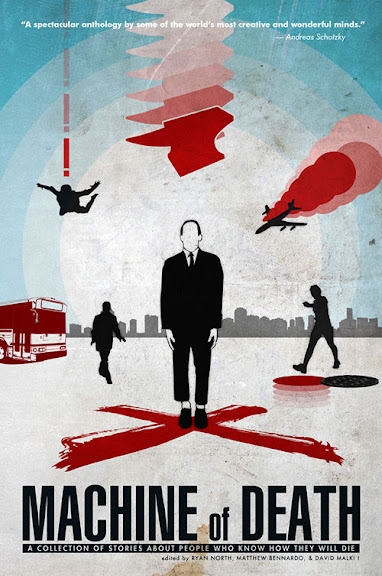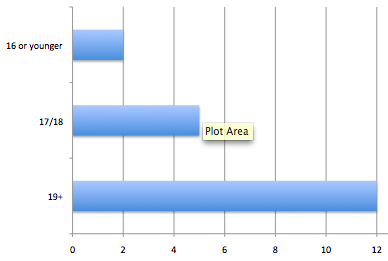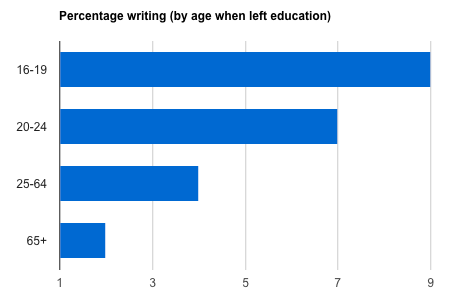I found it interesting that Stephen King’s experiments with e-book publishing seem to have been interpreted quite differently by two different authors I’ve been reading recently. According to Kovac’s “Here Comes the Book: Never Mind the Web: The Printed Book is Alive and Kicking” (p. 50, referencing Gomez “Print Is Dead: Books in Our Digital Age
“), when, at the end of 1990s, King published his novel ‘The Plant’ electronic only “the outcome was disastrous, with sales … being at least five times lower than the usual sales of his printed books.” On the other hand, according to John B Thompson in “Merchants of Culture
“, publisher expectations of the success of ebooks “…were also raised by the startling success of one of Stephen King’s experiments with electronic publishing. In March 2000 he published his 66 page novella ‘Riding the Bullet’ electronically, available only as a digital file that could be downloaded for $2.50: there was an overwhelming response, resulting in around 400,000 downloads in the first 24 hours and 600,000 in the first two weeks.” (p. 313). More recently, in 2009 (and too late for either author) Stephen King released “Ur” in Kindle-only form and it sold “five figures” in three weeks.
Archive for the 'new authorship' Category | back to home
A recent discussion about e-book sales among “indie” authors (those who have not been published traditionally or with minimal experience of conventional publishing) has inspired some interesting number crunching and (it seems to me) some rather overoptimistic speculation about the prospects for new authors who attempt to bypass the publisher system altogether by doing their own publicity and publishing electronically.
One of the most vociferous proponents of the “go it alone” model for authorship is thriller writer Joe Konrath, but critics of his approach often say that his success with self publishing could be due in large part to his already having been a conventionally published author before moving aggressively into online sales. Robin Sullivan, a guest on his blog, unveiled an analysis of 54 ‘indie’ authors who revealed on an electronic publishing message board that they were selling more than 1000 books a month. On top of that list is Amanda Hocking, who claims to have sold more than 450,000 titles in January alone.
Robin, who is the publicist for (and wife of) Michael Sullivan, an author on that list, provides some more detailed information about the economics of being an author of this kind in her posting. Derek Canyon also discusses the economics and provides a breakdown of the authors on that list by genre and by number of books in “print”.
It is undeniably true that, as Robin and Joe claim, it is possible to “do well” self publishing without having been published already conventionally- only six of the 54 authors on their list had been published by major publishers, for example. Nonetheless, some caution is in order. A few concerns leap out at me:
- This is a self-selecting sample out of an unknown population providing self reported statistics. Leaving aside the question of whether they have an interest in exaggerating their sales, this gives us no information about how easy it might be for others to follow their leads.
- no information is provided about the balance of sales between e-books and regular books (although given the source is kindleboards.com one can imagine that the proportion of e-book sales would be high), and more importantly we do not know the price at which each book is sold. This is important because it is possible to sell one’s book on Kindle for as little as $.99 (and if you do you only get $0.30 per book sold).
- The implicit definition of “doing well” as an independent author is, it seems to me, a rather undemanding one. As Derek Canyon puts it:
- If you look at the list of primary genres for the authors who are included in this self-selecting survey, it does not include literary fiction or poetry. Whether this is because “literary” authors do not hang out on this particular bulletin board, because such authors are not interested in ebooks, because literary fiction or poetry have a hard time selling as e-books or simply because they always have a hard time selling in the market as a whole compared to “genre” works is unclear.
If you assume that the cover price of the book is $2.99 (the minimum required to receive a 70% royalty from Amazon), then the author is making just over $2,000 per month, or $24,000 per year!
Median income of workers in the US in 2009 was $36,000 for men, $26,000 for women – for graduates (and I am guessing most writers are), this rises to $62k or $44k. If earning $24k a year is success, then “don’t give up your day job” (and many writers don’t). Mind you, things look a lot better if you compare only to other writers. A survey of UK writers in 2005 found that even those who spent more than 50% of their time writing, earned 64% of the median wage.
Clearly it is very early days in the development of electronic publishing and e-books. It remains very possible that bypassing conventional publishing to market and sell e-books will indeed become a viable option for many authors or even, potentially, a dominant one as e-book reader technology continues to develop and as the devices become increasingly popular. I think that individual case studies and small-scale surveys like these can provide an interesting snapshot of the current state of development, but I also think it is a mistake to read too much into them.
I hope in the coming years to be able to shed more light on this fascinating subject myself – stay tuned!

This podcast interview by Jesse Brown with the creator of Dinosaur Comics and this web interview about the brief but dazzling success of a short story collection, ‘Machine of Death are interesting at a number of levels.
Briefly, a group of well-known web comic creators got together and found contributors from among their readers for this short story collection that they would then illustrate. No mainstream publisher would touch it because it didn’t contain material from authors they recognised, so they thought they would self-publish it. And they organized the fan base they had gathered from their web comic activity to buy the book all at once in order to get media attention. It worked and the book hit number 1 for several hours on Amazon US (though as they said it only took “thousands” of sales to do this – it’s now at #1192). A few days later, they released the full text of the book free as a downloadable PDF.
This phenomenon has naturally excited a number of the proponents of “new authorship” models and it is indeed an impressive achievement, but I would add a few cautionary notes to this tale:
Ryan North says he is able to make a ‘comfortable living’ from t-shirt sales driven by his free online comic strip but wouldn’t say how much this amounted to (and his standards of ‘comfortable’ may have been formed by his recent status as an impecunious grad student).
It benefited from promotion by the fan bases of several well-known web comics authors, was promoted on a number of very prominent sites like boingboing, and falls into the sci-fi/fantasy genre. It may even be a great read (I don’t know yet but I have started downloading the podcast). Taken together this constitutes a nearly ‘perfect storm’ in favour of this book.
The broader question for the future of this model has to be how replicable it is. At the moment this is newsworthy – the economic significance of online-driven publication will be proven when tens of thousands instead of (I’m guessing) a few hundred authors can earn enough in this way to afford to bypass the conventional publishing system.
Of course none of this should take away from the fact that even if this is not the start of an economic revolution for new authors it may well be the start of a cultural revolution enabling many more people to become published authors (even if with a rather different notion of what being ‘published’ means). It is this as much as anything else I intend to explore in my upcoming research.
From Local Literacies I found Amateur Arts in the UK which quoted some stats from (Research Surveys of Great Britain & Arts Council of Great Britain, 1991) – see earlier post – and there I assumed the trail would go cold. What chance I could find an obscure 19 year old survey with no Google Scholar entry and a couple of mentions around the web? Yet hurrah! U of Leicester Library had it – a spiral bound report with lots of cross-tabulations in the back that were not discussed in the main text including exactly the stats I wanted! So without further ado, for the year 1991 some stats on proportions of UK adults (16+) and their propensity to write articles or stories but not as a profession.
Overall, 4% were writing stories/articles.
Education was, unsurprisingly, the factor that made the biggest difference. This chart shows percentages of writers by the age at which they finished education:
Age seemed to play an important role as well, and not in the way I would have thought.
I would have expected an “up-tick” post retirement as people had time to write memoirs etc – though perhaps this is an effect of lower overall education levels of older people.
The last important factor was social class.
AB (Middle class) = 8%, C1 (lower middle class) = 6%, C2DE (working class) 2%
Region, gender, and disability status don’t seem to have been a factor – nor does being unemployed (though the overall proportion of people writing was low enough that it’s hard to be sure.
Now that I have a baseline for social composition of writers I hope that my future research will be able to see whether the availability of online outlets has changed any of this.
Bibliography:
Research Surveys of Great Britain & Arts Council of Great Britain. (1991). RSGB Omnibus Arts Survey : report on a survey on arts and cultural activities in G.B. London: Arts Council of Great Britain.
Number of works of fiction published in UK 8022 (Children’s books 7,030) (BML 1994, quoted in Casey et al. 1996 p. 133)
Number of first time novelists published in the UK in 1990: 190 (Hutchison & Feist, 1991, p. 129)
“just 500 authors, less than half of 1 per cent, were responsible for a third of all sales.” (Prospect, Oct 2010) (presumably across all book categories)
“Both Jonathan Cape Ltd and William Heinemann Ltd, two of the best known names in fiction publishing, receive about 50 unsolicited letters of manuscripts each week from ‘unknown’ fiction writers. Heinemann no longer look at unsolicited manuscripts.” (Hutchison & Feist, 1991, p. 129)
Has the advent of the web and print on demand changed this? We’ll see…
Casey, B., Dunlop, R., & Selwood, S. (1996). Culture as commodity? : the economics of the arts and built heritage in the UK. London: Policy Studies Institute.
Hutchison, R., & Feist, A. (1991). Amateur arts in the UK. London: Policy Studies Institute.
For a while now I have been looking for information on what proportion of people write “amateur” poetry or prose (outside of a school setting) and whether there is any evidence of change now that people can ‘publish’ themselves online rather than just having to stick the results in a drawer or struggle to get published professionally. Here at last is some data:
In the UK in 1991, people who practiced activity but not as a full-time profession:
2% were writing poetry, 4% making videos, 4% writing stories
Research Surveys of Great Britain & Arts Council of Great Britain. (1991). RSGB Omnibus Arts Survey : report on a survey on arts and cultural activities in G.B. London: Arts Council of Great Britain.
In 2007 14% of people who created a web page in the UK did so (at least in part) “to publish my own writing or music”.
De Rosa, C., Cantrell, J., Havens, A., Hawk, J., & Jenkins, L. (2007). Sharing, Privacy and Trust in Our Networked World.
15% of UK internet users (c. 10% of population) maintained a personal website in 2007. Ergo, perhaps 1.5% of people in the UK in 2007 were publishing their own writing or music online.
Dutton, W. H., & Helsper, E. (2007). The Internet in Britain: 2007.
Social networking is an even more interesting case because it is more widespread.
No figures are available from the OCLC report for the UK alone on social networking site use like Myspace but 22% of users from 6 countries said they used it at least somewhat “to express myself creatively with self-published materials” – and at least some of the 24% who “document my personal experiences and share with others” may be doing so more or less creatively. This was at an early stage in the diffusion of SNS use though – in 2007 only 17% of UK internet users had created an SNS profile. This has doubled since then according to Ofcom.
Ofcom. (2010). UK Adults’ Media Literacy.
So very roughly 7% of the UK adult population are using social networking sites to self-publish (though this presumably includes video and music as well as text).
I couldn’t finish without mentioning one more study about creative use of the internet – Hargittai, E., & Walejko, G. (2008). The Participation Divide: Content creation and sharing in the digital age. Information, Communication & Society, 11(2), 239 – 256. doi: 10.1080/13691180801946150
It has more detailed information about gender, SES and education and their relationship with creative activity online but is based on a survey of US undergraduates.
Pointers to further data (especially quantitative data) about creative writing on and offline would be gratefully received. This work is conducted as preparation for my next major research project on what I’m calling the “New Authorship” (more work on this will also be tagged “new authorship”).
If you like this sort of thing you will likely also like Gauntlett, D. (2011). Making is Connecting: The social meaning of creativity, from DIY and knitting to YouTube and Web 2.0. London: Polity Press. I am looking forward to reading more than just the samples available so far on the site!
I missed this when it first came around in April – according to Bowker who owns ‘Books in Print’, the publisher in the US which published the most titles – 272,930 – very close to the number of new titles published by all traditional publishers – is Bibliobazaar, which was then written up by Publisher’s Weekly. Turns out they specialise in packaging and reselling out of print books via print on demand. More evidence of the long tail in action, though of course each book probably only gets a few new readers and it is not clear if the figures for these new publishers mixes new titles with newly reissued titles and with any title from their back catalogues which makes comparison difficult. It would be interesting to know more about what sells well and to whom in that market if there are discernable patterns and how this differs from mainstream publishing.
I am working on a presentation for IAMCR 2010 about the need to adjust media literacy education to encompass new forms of online practice and I would value your help, fellow netizens and academics. I am looking for references to the potential benefits that can be derived by individuals from their social media use. So far I have come up with the following categories and key texts:
- Building and maintaining social capital (Steinfield, C., Ellison, N., & Lampe, C. (2008). Social capital, self-esteem, and use of online social network sites:A longitudinal analysis. Journal of Applied Developmental Psychology, 29(6), 434-445.)
- Finding one’s voice politically (Rodríguez, C. (2001). Fissures in the mediascape: an international study of citizens’ media. Cresskill, N.J.: Hampton Press.) (maybe also Couldry’s new “Why Voice Matters”? though I have not had the chance to read it yet)
- Finding one’s voice culturally/creatively
- Having a space to reflect on one’s self-identity (Stern, S. (2008). Producing Sites, Exploring Identities: Youth Online Authorship. In D. Buckingham (Ed.), Youth, Identity, and Digital Media (Vol. -, pp. 95-117). Chicago.
- Having the opportunity to reflect critically on media products through increased familiarity with media forms Jenkins, H. (2006). Confronting the Challenges of Participatory Culture: Media Education for the 21st Century.
- Learning employment-related content creation skills
Are there any important categories I have missed? And what are the best empirical and theoretical references you would suggest that could relate to each of these themes?
I’ll add a link to my presentation here as soon as I upload it after the conference.


